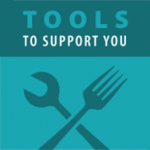 Your pantry’s decision to focus on safe and healthy food pantry practices is an important first step. Assessing pantry practices ensures that the strategies your pantry implements are reasonable and appropriate for the pantry and will have the most impact for food pantry clients. You might consider partnering with your county UW-Extension office or other local educational institution to help collect this information.
Your pantry’s decision to focus on safe and healthy food pantry practices is an important first step. Assessing pantry practices ensures that the strategies your pantry implements are reasonable and appropriate for the pantry and will have the most impact for food pantry clients. You might consider partnering with your county UW-Extension office or other local educational institution to help collect this information.
This self-assessment tool is designed to allow pantries to assess current practices and policies that support a safe and healthy food pantry environment and suggests areas for improvement. Use this self-assessment tool to guide the development of your Action Plan. Safe & Healthy Food Pantry Self-Assessment Safe & Healthy Food Pantries Assessment
Food Source Self-Assessment
This self-assessment tool is designed to help you explore the relative percentage of food received from each of these sources to better understand points of leverage for improving the safety and nutritional quality of the foods you offer. That is, if you receive a majority of your inventory from a food bank, your action plan might look different than if you are primarily dependent on community or commercial donations.
The What’s on the Shelf? Inventory Snapshot Tool provides a rough estimate of current food inventory and allows you to better understand how food destined for distribution aligns with the amount of food per category necessary to meet the Dietary Guidelines for Americans. In turn, this information can be used as a general guide for your food procurement and acquisition strategies. It is important to remember that this inventory assessment will only provide a snapshot in time, and may not always be an accurate reflection of what you have on hand. Therefore, you might consider conducting an assessment at least once per quarter (summer, winter, fall and spring) to capture seasonal changes in inventory. If you choose to use this tool, please read the caveats and cautions closely to understand the current capacity of the tool.Inventory Assessment
Food pantries that receive a significant portion of their inventory through community food drives might consider conducting an assessment of food donated through these channels. An example is Brown County’s Food Drive Inventory Tool. This tool was developed to establish a baseline from which to measure the impact of donor education messages on increasing healthy food donations.
These food pantry inventory assessments may require a significant amount of time. The amount of time dedicated for each will depend on the size of your food pantry inventory and the amount of food received from a community food drive or the detail in existing inventory records kept. Seeking out the help of community volunteers to assist you with these efforts is recommended.
Other Ideas for Assessment
Community Asset Map
A community asset can be people, places or services that exist in the community. Making a list or an asset map helps you better understand your community and identify partnership opportunities and other resources that can support your pantry. Refer to the University of Kansas Community Toolbox for more information on how to create a community asset map.
Use a questionnaire to ask guests for feedback on general pantry operations and to get more information about safe and healthy food pantry strategies. Examples of information you might seek from pantry guests includes: Tool: Guest interview questions Sample Surveys: Open ended questions (English and Spanish) Closed ended questions (English AND Spanish) Guest Interviews or Survey




